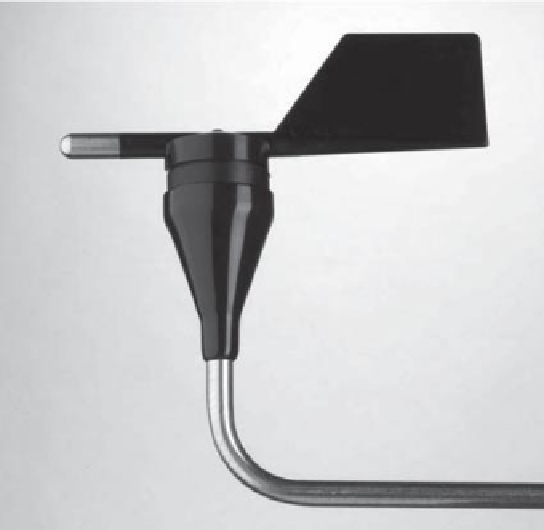Environmental Engineering Reference
In-Depth Information
of the wind turbines. A wind vane is usually used to measure wind direction (with
prop-vane and sonic sensors, no separate vane is required, though one or two may be
desirable for redundancy). In the most familiar type, a horizontal tail connected to a
vertical shaft rotates to align with the wind (Fig. 4-4). To define the wind direction
with adequate redundancy, it is recommended that wind vanes be installed on at least
two monitoring levels. Ideally, they should not be mounted on the same booms or
even at the same heights as the anemometers, as they could interfere with obtaining
accurate speed readings. It is customary to mount the direction vanes 1 or 2 m below
the anemometers.
For a wind vane with a potentiometer-type transducer, the data logger usually
provides a voltage across the potentiometer's entire resistive element and measures
the voltage where the potentiometer's wiper arm makes contact. The ratio between
these two voltages determines the position of the vane with respect to its reference
direction. The potentiometer cannot cover a full 360
◦
, however, and a small gap is
left between where it starts and ends. In this so-called deadband, the output signal
floats at random and the direction cannot be determined. The best practice is to orient
the deadband in an infrequent direction, and usually directly facing the tower; in
addition, the size of the deadband should not exceed 8
◦
. The precision of the wind vane
direction is another important consideration. A resolution better than or equal to 1
◦
is
recommended.
Figure 4-4.
A direction vane.
Source:
NRG Systems, Inc.












Search WWH ::

Custom Search